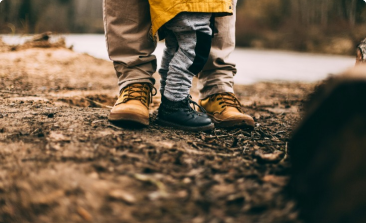Description
You’re cradling a crying baby (again) and wishing you were anywhere but here. What can you do to deal with this? Bury your nose in that soft spot on your baby’s neck and breathe in this heavenly scent. Then try these tricks:
To calm oneself down. Okay, that’s easier said than done. But it’s worth it. Promise. Why does it work? It’s something called entrainment: we’re programmed to fall in sync with an external rhythm. This means your baby’s breathing and heartbeat will naturally follow yours. So hold her slow.
Cluster feed. During the witching hour, your baby may want to nurse every 30 minutes or more. That’s perfectly fine. Hopefully they’ll sleep longer at night when they fill up their tummy with cluster feeding.
Use a pacifier. All babies have a strong sucking reflex. You can try soothing your baby with a pacifier instead of offering your breast or a bottle. Not only will sucking soothe your baby, but all the saliva he swallows will help break down the milk that’s already in his stomach.
Offer skin-to-skin time. You can soothe your baby by holding him naked to your chest (red alert: leave diaper on) so he can hear your heartbeat.
Check for tourniquet syndrome. Make sure no hair is caught on your baby’s fingers, toes, or genitals. The hair could restrict blood flow and cause redness and swelling. It’s pretty rare, but keep your eyes peeled.
What can help a crying baby?
You can’t spoil your baby with too much attention. To calm a crying baby:
- First, make sure your baby doesn’t have a fever. In a baby, a fever is a temperature of 38°C (100.4°F). Call the doctor right away if your baby has a fever.
- Make sure your baby is not hungry and has a clean diaper.
- Cradle or walk the baby.
- Sing or talk to your baby.
- Offer the baby a pacifier.
- Take the baby for a stroller ride.
- Hold your baby close to your body and breathe calmly and slowly.
- Give the baby a warm bath.
- Pat or rub the baby’s back.
- Place your baby on his tummy across your lap and rub your baby’s back.
- Put your baby in a swing or vibrating seat. The movement can be calming.
- Put your baby in an infant carrier in the back of the car and go for a ride. The vibrations and movements of the car often have a calming effect.
- Play music – some babies respond to both sound and movement.
Some babies need less stimulation. Babies 2 months and younger may be well swaddled and lying on their backs in the cradle when the lights are very dim or dim. Make sure the wrap is not too tight. Stop changing when the baby starts to roll over.
Never shake a baby
A crying baby can cause extreme stress. In fact, mothers are biologically wired to feel this stress. So when crying seems unstoppable, stress is building up in your body.
Still, make sure you never shake your baby. Severe shaking can cause the blood capillaries in your baby’s brain to burst. Shaken Baby Syndrome can be fatal.
If you’re feeling extreme stress when your baby cries, it’s perfectly okay to place your child safely in their crib and step back to take a few deep breaths. You can also ask your partner or a friend to do the caring for you for a while.
You might also like
Parenting Updates: Subscribe Now!

ALL UPDATES
Go from pregnancy to adolescents with our email bulletins, loaded with reasonable, modern data about bringing up youngsters and taking care of yourself as a parent.
SUBSCRIBE NOW
MOVIE REVIEWS
Find the best motion pictures for your family with our youngster amicable surveys. Search new deliveries and more seasoned motion pictures by age, rating and type.
SUBSCRIBE NOW
MENTAL HEALTH RESOURCES
Is it safe to say that you are an expert working with families? Get data about kid, adolescent and parent psychological well-being and prosperity.
SUBSCRIBE NOW











































